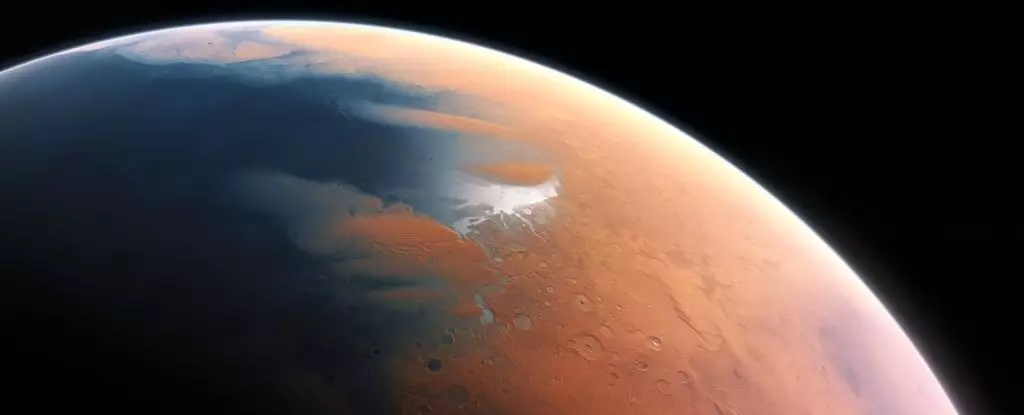Mars, our red, dusty neighbor in the solar system, has long been a source of fascination for scientists. Recent analysis of seismic data collected by the Mars InSight lander has revealed something truly remarkable – massive reservoirs of liquid water hiding deep below the surface of the planet. This discovery has raised many questions about the water cycle of Mars and its implications for the planet’s past and potential habitability.
Geophysicist Vashan Wright emphasizes the critical importance of understanding the Martian water cycle for comprehending the evolution of the planet’s climate, surface features, and interior structure. By identifying the location and quantity of water on Mars, scientists can piece together the puzzle of the planet’s aquatic history. While the presence of water on Mars in the form of ice is known, the revelation of underground liquid water reservoirs opens up new avenues for investigation.
The geological features of Mars, including ancient dry lake beds and deltas, provide evidence that the planet was once significantly wetter than it is today. However, the question of where all the water went remains unanswered. Two possible scenarios emerge – water either evaporated into space or seeped down into the Martian interior. The data collected by the Mars InSight lander suggest that deep below the Martian surface lies a layer of fractured igneous rock filled with liquid water. This layer, located at depths of 11.5 to 20 kilometers, offers clues about Mars’ past and present habitability.
The discovery of a vast reservoir of liquid water beneath the Martian surface has sparked speculation about the potential for life on the planet. Geophysicist Michael Manga suggests that the underground water reservoir could be a habitable environment, similar to deep mines or the ocean floor on Earth. While no direct evidence of life on Mars has been found yet, the presence of liquid water raises intriguing possibilities about the planet’s ability to support life.
Despite the groundbreaking findings regarding Mars’ hidden water reserves, many questions remain unanswered. The distribution of water-rich layers across the entire planet is still uncertain, and further observations and analysis of Mars’ crust are needed to unravel the mysteries lurking beneath the surface. Perhaps the time has come to deploy new instruments, such as a more advanced seismometer, to uncover more secrets hidden within the Martian depths.
The revelation of vast reservoirs of liquid water deep below the Martian surface has shed new light on the planet’s past and present conditions. By unraveling the Martian water cycle and exploring the implications of underground water reservoirs, scientists are advancing our understanding of Mars’ potential habitability and its mysterious aquatic history. As we continue to probe the depths of the red planet, we may uncover more secrets that could reshape our perception of Mars and its place in the universe.


Leave a Reply